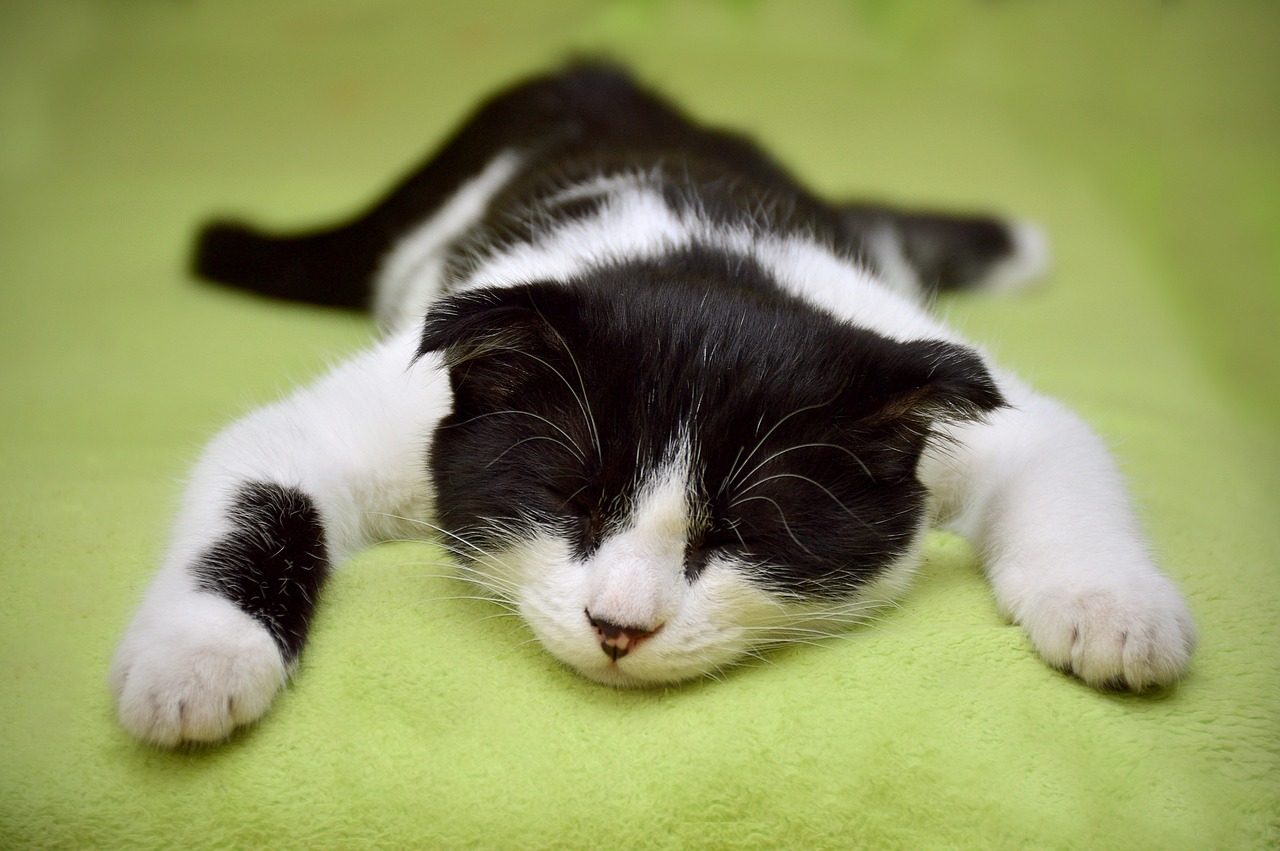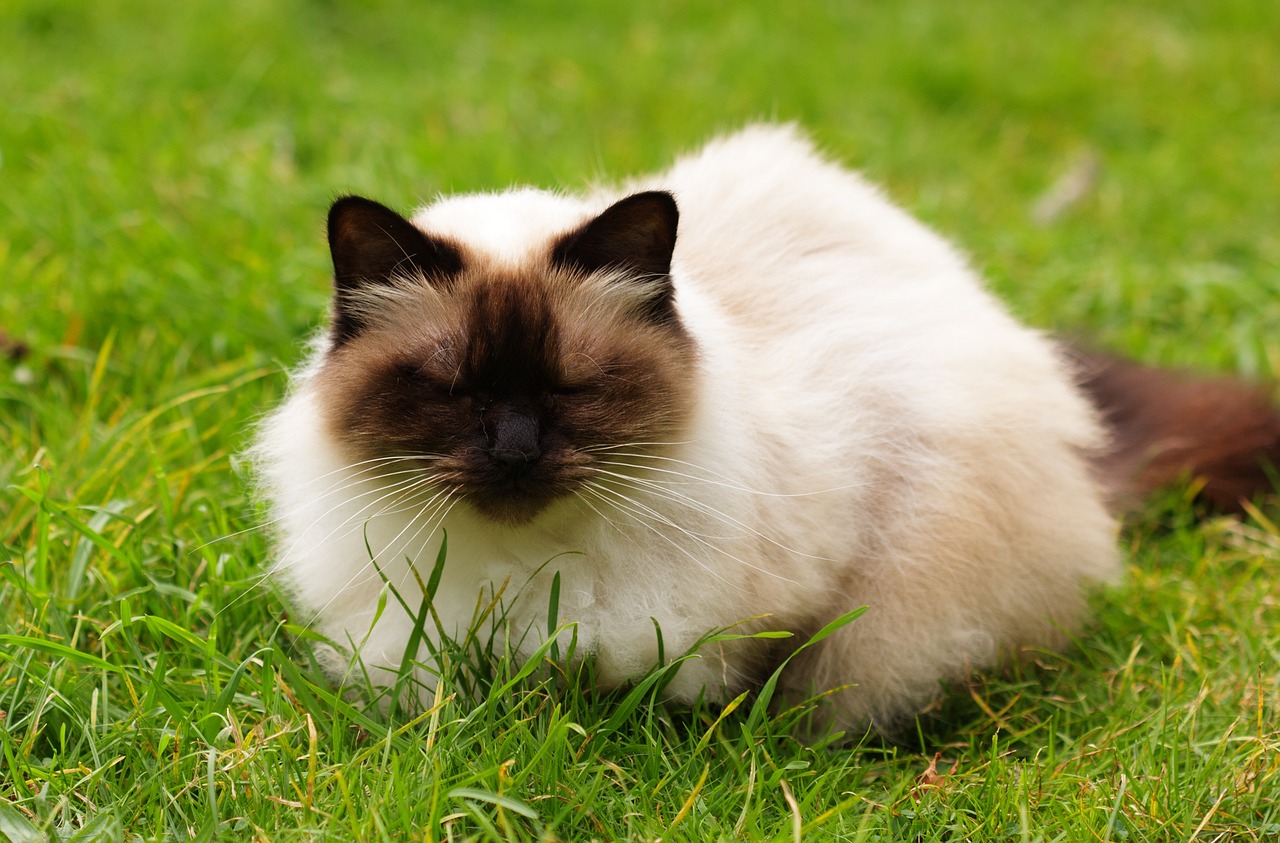Why weight matters to cats? The reason we worry about obesity in cats is because there is a correlation between obesity and diabetes. Also, obesity makes orthopaedic problems much worse. So as animals age, they are prone to develop arthritis and this is more of a dog problem than a cat problem. Although even a fat cat will develop some mobility issues, in dogs in particular, especially in large breeds dogs like Labrador and up, being skinny is the best thing you can do for your dog. We will discuss here some practical methods to determine if your cat is overweight or obese, but first, you should know the serious health problems caused by obesity.
Overweight cats face serious health issues
Following are some of the major health concerns for an overweight cat.
Diabetes in cats
In cats, diabetes is the main issue, and mobility and osteoarthritis are another one. That is the main problem with being fat, your cat can become diabetic. When you say diabetes in cats it means that their pancreas is not producing sufficient insulin. Insulin is required to absorb glucose into the bloodstream after consuming food. Increased urination and excessive thirst are some of the major symptoms of diabetes in cats.
Hypertension in cats
There’s a strong correlation between idiopathic hypertension in cats (high blood pressure) and obesity in cats. A measurement of systolic blood pressure below 150mmHg is considered low risk of systemic hypertension in cats. While blood pressure above 180mmHg puts a cat in the category of high risk. Readings between 150 and 180mmHg are in the category of moderate or mild hypertension in cats.
Infections in cats
Another reason many people might not think about is infections in cats. Infections in the fat are very difficult to deal with. They’re called steatitis or panniculitis. They are awful to deal with particularly if you have a cat who goes outside. Who might be more prone to getting into catfights or getting injured? If they are overweight they can get infection in their subcutaneous fat, which is very difficult to treat. Usually, you need prolonged antibiotics and even surgical intervention is inevitable.
Surgical risks
Also being an overweight cat does increase your surgical risks. Human surgeons often tell their patients to go lose some weight before they go under a surgical knife. Because performing surgery on patients who are obese and have a lot of intradermal fat is a very harrowing experience. It makes cat surgery much more difficult, and much more challenging to handle things for a surgeon. They have a high risk of both surgical complications and post-surgical complications such as infections. So it’s not good to be overweight and have to go for some kind of surgery.
Fatty Liver Disease in obese cats
Another risk factor in obese cats is something called hepatic lipidosis. This is a problem not unique in cats but it’s more common in cats than any other domestic species. Hepatic lipidosis is essentially if you are overweight and you starve, your body mobilizes lipids and fats out of your fat storage and tries to convert them into glucose in the liver. This happens because your brain needs glucose to live. Unfortunately, cat livers are particularly bad at metabolizing fat. So if you have an overweight cat and it’s starving and is mobilizing a ton of fat. It may overload their liver and give them something called fatty liver disease or hepatic lipidosis in cats. Which ultimately causes liver shutdown and often these cats are already sick. Because whatever is that made them not eat in the first place is often a medical condition.
Fatty liver disease in cats is quite manageable but it’s certainly expensive to manage and requires a feeding tube to be placed. So being an obese cat puts you at a very much increased risk of this. Therefore it is best to avoid it. Dogs don’t get hepatic lipidosis. They starve very nicely. They are very adaptive to starvation. This disease can also be observed in rabbits.
Risk factor for development of chronic kidney disease (CKD) in cats
There was a study published recently, talking about how being slightly overweight is protective in cats in case of kidney disease. One of the biggest struggles In cats with kidney disease is getting them to eat and getting them to maintain their weight. The study found that cats who are a little bit on the heavier side of normal before developing kidney disease live longer than cats who are skinny and develop kidney disease. Since kidney disease in cats is so common issue. According to numbers, almost 30% of cats will develop some degree of kidney dysfunction later in life. So it’s worthwhile remembering this when you are recommending that people keep their pets at a healthy weight. It’s good to make some allowances for older cats and not get too focused on making them skinny, because it may not necessarily be in their best interest.
How to tell if your cat is overweight or obese?
People often ask, what’s a good weight for my cat? That’s an impossible question to answer in the average patient. Cats can vary greatly in size according to their breeds and genetics. So animals can be evaluated on body condition score.
Body condition score
Body condition score in cats is essentially how much meat and fat is on your cat’s bones. There are two commonly used scales, a 1-5 or 1-9 scale. They are the same and the middle number whether 3 or 5 is normal. A perfect cat would be a 5/9 or a 3/5. So as you get skinnier, the number goes down, as you get fatter, the number goes up. So 1 would be a skeletal animal that’s been starving and is near death. Whereas 9 would be a cat who is 17 to 18 kilos and is spherical all around.
So that gives you a meaningful evaluation of how much body fat a patient has. There are several different methods for body condition scoring. You need to keep in mind some basic principles.
Measurement of body condition score
You look at two things on your cats and dogs to measure their body condition score. One is how easy it is to feel their ribs and the other one is how easy it is to feel their spine.
- Checking the spine
So if you can feel the spine of your cat, little bumps are spinous processes of their vertebrae. You should be able to feel them without having to push them down. But what you should not be able to do is have them sticking up, feel them sticking up like a saw blade and feel their sides very easily.
If you can feel these spinous processes and it looks like you are feeling a saw blade and you are feeling not just the tip of them but the sides also, that might be a sign of muscle wastage along the lumbar muscles. It could be a sign of starvation.
Conversely, if you have to push to find those spinous processes. If they are just covered in a layer of buttery tissues then you probably have an animal that’s quite overweight.
Checking the ribs cover
The other thing you can look at is the ribs cover of your cat. Again here you want to be able to feel the ribs without having to push down. What you don’t want to be able to do is put your fingers between the ribs. You want to be able to feel the ribs with minimal pressure just by running your hand along. But if you have to push down to count the number of ribs your kitty has, Then there’s probably too much cover on those bones which is an indication of obesity.
Now with those two measurements, you can score your cat in terms of body condition scoring. So that is how you can assess whether your cat is fat or more prone to diabetes and that is really what you should care about him. Remember to keep up to date on your cat’s vaccination status. you can get complete Cat Vaccinations in Pakistan: Schedule and Recommendations here.
Frequent Asked Questions
You can assess your cat’s weight by feeling their ribs and examining their body shape. If you can’t easily feel their ribs or if their waistline is not visible, your cat may be overweight.
Overweight and obese cats are at higher risk of various health issues, including diabetes, heart disease, arthritis, and urinary tract problems. These conditions can significantly impact your cat’s quality of life and longevity.
The ideal weight for a cat can vary by breed and individual, but as a general guideline, most domestic cats should fall within a range of 8 to 12 pounds. Breed-specific variations may apply, so consult your veterinarian for breed-specific recommendations.
If you believe your cat is overweight, consult your veterinarian. They can perform a thorough evaluation, provide guidance on an appropriate diet, and recommend an exercise plan. It’s very important not to attempt drastic weight loss without professional guidance.
To help your cat lose weight, follow your veterinarian’s recommendations regarding diet and exercise. This may involve switching to a weight management cat food, measuring portions carefully, and engaging your cat in regular play and exercise routines.



